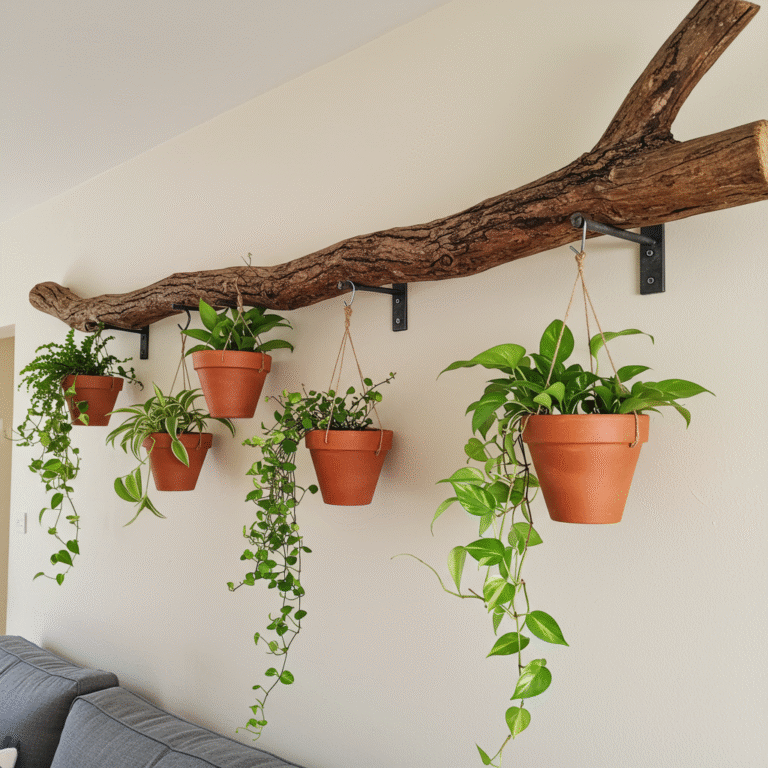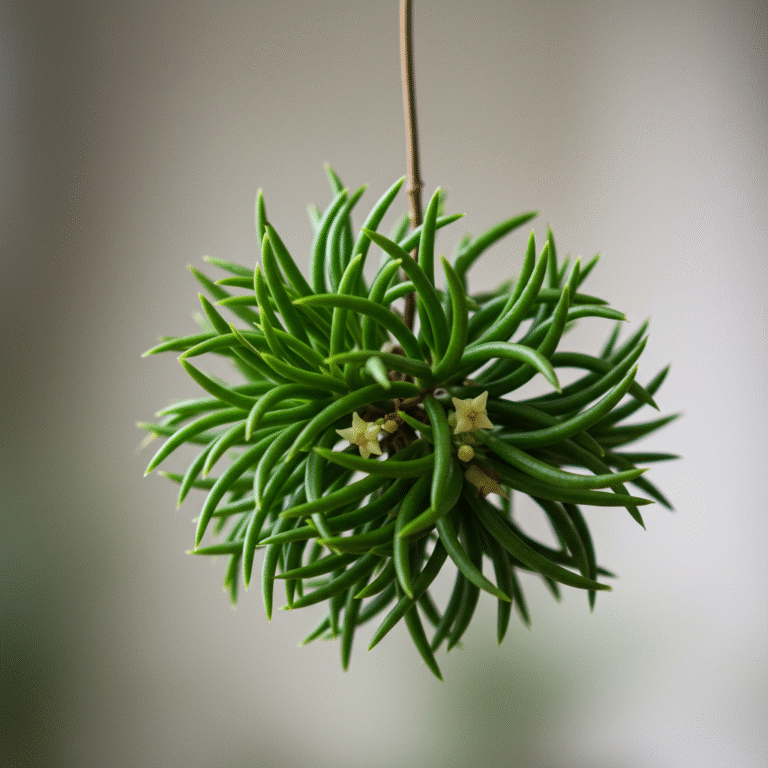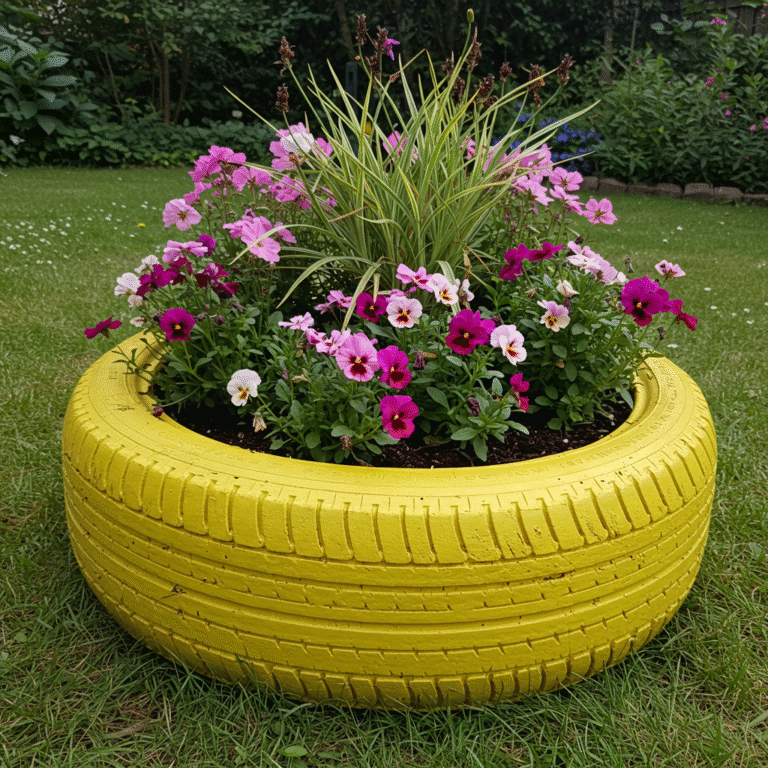15 DIY Hanging Planters You MUST Try!

Breathing new life into your home decor doesn’t have to break the bank. With a little creativity, you can craft a stunning DIY hanging planter that adds a splash of green to any room. Get ready to roll up your sleeves and transform simple, everyday items into gorgeous, high-flying homes for your favorite plants!
Before we dive into the fun stuff, let’s talk about why having plants indoors is so awesome. It’s not just about looking pretty; science says it’s good for you!
The Science-Backed Benefits of Indoor Plants
Studies have shown that houseplants can be surprisingly powerful. They’re not just sitting there looking green; they’re actively improving your environment and your mood.
| Benefit | Scientific Finding | Source |
|---|---|---|
| Air Purification | Certain plants can remove up to 87% of air toxins in 24 hours. | NASA Clean Air Study |
| Stress Reduction | Interacting with indoor plants can reduce physiological and psychological stress. | Journal of Physiological Anthropology |
| Increased Focus | Students in a classroom with plants demonstrated 70% greater attentiveness. | The Royal College ofAgriculture in Cirencester |
| Boosted Mood | “Active interaction with indoor plants can have a positive effect on one’s state of mind.” | Dr. Charlie Hall, Texas A&M University |
Now, let’s get our hands dirty and make some amazing planters!



1. The Classic Macrame Hanger

You can’t talk about hanging planters without mentioning macrame. This retro craft is back in a big way, and it’s easier than you think. All you need is some rope and a few basic knots.
Start with a simple square knot and build from there. You can find tons of free patterns online for all skill levels. The beauty of macrame is you can customize the length and style to perfectly fit your pot and your space.
Pro Tip: Use a sturdy metal or wooden ring at the top for easy hanging. This adds a professional touch and ensures your planter is secure.
2. Upcycled Plastic Bottle Planters

Don’t toss those empty soda bottles! With a little paint and some imagination, they become adorable hanging planters. This is a fantastic project for the kids.
Cut the bottle in half, using the bottom portion. Punch a few holes for drainage and two holes on the sides to thread your string or wire. You can paint them to look like cute animals or cover them in fabric for a more sophisticated look.
3. The Minimalist Leather Strap Hanger

For a sleek, modern vibe, a leather strap hanger is the way to go. It’s incredibly simple but looks so chic. You just need a strip of leather, a pot, and a few screws.
Cut the leather into two long strips. Cross them underneath your pot to create a supportive cradle and secure the ends together at the top. This design works best with pots that have a defined lip to prevent slipping.
4. Painted Can Planters

Your old tin cans from soup or veggies have so much potential. A fresh coat of paint can turn them into a vibrant and colorful display.
First, make sure to sand down any sharp edges where the lid was removed for safety. Then, drill a drainage hole in the bottom and two holes near the top rim for hanging. Chalk paint gives a lovely matte finish that’s super trendy.
5. Coconut Shell Hangers

Bring a tropical feel to your home with planters made from coconut shells. They are naturally beautiful and wonderfully rustic. You’ll feel like you’re on vacation every time you see them.
After enjoying the coconut, carefully saw the shell in half. Sand the edges smooth, and drill three small holes evenly spaced around the rim. Thread your rope through, and you have a perfect little home for an air plant or a small succulent.
6. The Repurposed Colander Planter

Who knew a kitchen colander could be so stylish? Its built-in drainage holes make it the perfect ready-made planter. This is probably the easiest project on the list!
Just find a colorful colander, or spray paint an old one. Use chain or sturdy rope attached to its handles to hang it up. These are great for plants that like a lot of drainage, like succulents and cacti.
7. Chic Copper Pipe Planter

This one requires a bit more effort, but the result is a stunning, industrial-chic piece. You’ll need copper pipes and fittings to create a geometric frame that holds your pot.
Cut the pipes to your desired lengths and connect them using elbow fittings to create a cage-like structure. No soldering is needed if you get a snug fit! The copper will develop a beautiful patina over time, adding to its charm.
8. Woven Basket Planters

A simple woven basket can be easily transformed into a hanging planter. It adds a touch of bohemian, rustic charm to any room. Look for baskets at your local thrift store for a budget-friendly option.
You’ll want to line the inside of the basket with a plastic saucer or a piece of a garbage bag to prevent water from leaking out. Then, just attach ropes to the sides and hang it up.
9. Glass Jar Terrarium Hangers

Glass jars, like mason jars or even old pasta sauce jars, make for beautiful hanging terrariums. You can see all the layers of soil, rock, and moss inside.
Carefully layer gravel, charcoal, and soil inside the jar. Add your small plants, and then tie a secure macrame-style sling around the neck of the jar for hanging. These are perfect for humid-loving plants.
10. Upcycled Lightbulb Vases

This is a delicate and whimsical idea for single stems or air plants. It’s a bit tricky but looks so cool when it’s done. You need to be very careful when hollowing out the lightbulb.
Using pliers and a screwdriver, carefully remove the bottom electrical foot contact and break the black glass insulator. Once hollow, you can tie twine around the metal screw base to hang it.
11. Old T-Shirt Plant Hanger

Got an old t-shirt you don’t wear anymore? Don’t throw it out! You can turn it into a soft and stretchy plant hanger.
Cut the t-shirt into continuous strips of fabric, like you’re making t-shirt yarn. Then, use those strips just like you would use rope to create a macrame-style hanger. The stretchiness of the fabric makes it easy to fit different pot sizes.
12. Wooden Bowl Planter

A simple wooden salad bowl can be repurposed into an elegant hanging planter. The natural wood grain adds warmth and texture.
Drill a drainage hole in the center of the bowl. Then, drill three evenly spaced holes around the rim to attach your hanging ropes. Be sure to seal the inside of the bowl with a waterproof finish to protect the wood.
13. Teacup and Saucer Hanger

For a touch of whimsy and charm, hang a teacup! This is perfect for a tiny succulent or a trailing plant. It’s a delightful addition to a kitchen window.
You’ll need a drill bit that can go through ceramic to make a drainage hole. You can hang it by the handle, or create a little macrame sling for it. Gluing the cup to the saucer first creates a lovely, stable base.
14. Repurposed Tire Planter

This is a big, bold statement piece for your outdoor space. An old tire can be painted and transformed into a unique hanging planter.
Clean the tire thoroughly and paint it a bright, fun color. Drill drainage holes in what will be the bottom, and then hang it from a sturdy tree branch or pergola using heavy-duty chain. Fill it with trailing flowers for a stunning cascade of color.
15. The Geometric Himmeli Planter

Inspired by a traditional Finnish craft, Himmeli planters are geometric sculptures made from brass tubes or even plastic straws. They are airy, modern, and super stylish.
You string the tubes or straws together with wire to create 3D geometric shapes, like diamonds or pyramids. The pot then sits snugly inside the structure. These are especially great for showcasing air plants that don’t need soil.
Frequently Asked Questions (FAQ)
1. What kind of rope is best for hanging planters?
For macrame and other rope hangers, cotton rope is popular for its softness and natural look. However, for outdoor planters or very heavy pots, a synthetic rope like nylon or polypropylene is a better choice as it’s more resistant to rot and mildew.
2. How do I water a hanging planter without making a mess?
The best way is to take the planter down and water it in the sink or bathtub. Let it drain completely for 15-20 minutes before hanging it back up. If you can’t take it down, use a watering can with a long, narrow spout and water slowly, or place a tray underneath temporarily.
3. What are the best plants for hanging planters?
Trailing plants, often called “spillers,” are perfect because they cascade beautifully over the sides. Think of plants like Pothos, String of Pearls, Spider Plants, English Ivy, and Philodendrons. For smaller hangers, succulents and air plants work great.
4. How do I make sure my ceiling can support the weight?
This is super important! Always hang heavy planters from a ceiling joist, not just the drywall. Use a stud finder to locate the joist. For very heavy pots, it’s best to use a hook that is specifically rated for the weight you plan to hang.
5. My DIY planter doesn’t have drainage holes. What should I do?
If you can’t add drainage holes, you can use the “pot-in-a-pot” method. Keep your plant in its plastic nursery pot (which has drainage) and place that whole thing inside your decorative hanging planter. When you water, you can take the inner pot out to let it drain.
Alternatively, add a layer of pebbles or gravel at the bottom of your planter before the soil, but be very careful not to overwater.
Conclusion
Creating your own DIY hanging planter is more than just a craft project; it’s a way to personalize your space and connect with nature on a new level. We’ve talked about using everything from old cans to coconuts, but the real secret ingredient is your own creativity.
Don’t be afraid to look at the objects around you in a new light. That old lampshade, a worn-out handbag, or a piece of driftwood could be the foundation for your next great planter.
The act of making something beautiful with your own hands brings a unique sense of satisfaction and turns your home into a true reflection of you—a place that grows and blossoms, just like your new high-flying plants.






